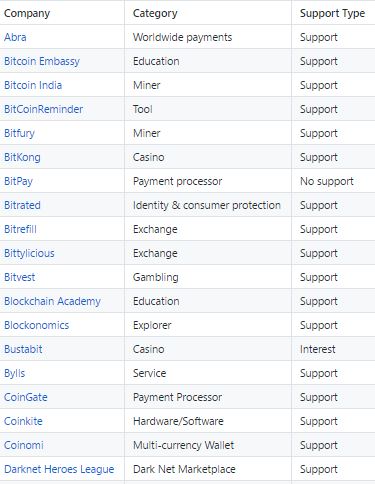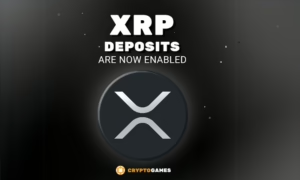How To Survive BIP148 The Upcoming Bitcoin UASF

There is a lot of confusion about what BIP148 means to each bitcoin user, what a UASF is and how will this whole change affect the Bitcoin Network. To explain how the entire system will fare under the changes that will go through on August 1st, 2017, it is necessary to have a certain degree of clarity on what is actually going to happen. Afterwards it will be possible to assess what is at stake for each kind of actor. Only then will everyone be able to decide what they need to do to survive BIP148, the Bitcoin UASF.
What will Happen Under BIP148?
The first step we need to follow to get to where we all want to get – what will happen to my coins – is to understand what BIP148 is. BIP148 is a user activated soft fork, henceforth referred to as UASF. The most basic understanding anyone should have about this UASF is that it will activate SegWit through a tightening – hence, soft fork – of network rules. This is possible because over 80% of the nodes signaled for SegWit, which means that an overwhelming majority of economic actors within the Bitcoin Network are in favor of SegWit.
Quick Recap: Many people are under the impression that hash power i.e. miners control the Bitcoin Network. It is actually the nodes that have the voting power. The nodes propagate transactions; therefore they act to verify them within each block mined. Those blocks must conform to the same rules the nodes work under. This creates a balance of power between miners and nodes. We will not get into how this balance of power works because all we want to do here is tell you how to survive BIP148.
Economic Actors
When an overwhelming majority of economic actors – which are full nodes – enforce a tightening of the rules, they force the hand of the miners. BIP148 turns the table on the miners telling them the nodes will activate and begin SegWit enforcement from a given date onwards, using compatible blocks from miners that adopt the change. Miners that adhere to this change, will have to continue building the chain based on compatible blocks from that point onwards.
All these changes will go through on August 1st, 2017, although there is also a chance – theoretical at least – that none of the miners will follow the nodes. This can stop SegWit activation on its tracks, and could result in a longer scaling process. Nevertheless, a scenario in which there is no mining power behind the UASF, is the most unlikely scenario of them all. In all likelihood, mining power will fluctuate and settle anywhere between just above the majority of the current mining power or just below the 51% mark.
Short Term Incentives
This will create short term incentives for more miners to join the network, while at the same time creating some inconveniences. The Bitcoin Network may fall behind the 10 minutes per block target for a few weeks, slowing transactions down until the network retargets. It might also create incentives for miners to attack the network, but these miners will ultimately profit more from putting their mining power behind the UASF than by attacking it. Rational, profit seeking economic actors will not risk a pyrrhic victory. By now it is clear that everyone must make adjustments to survive BIP148.


source: http://www.uasf.co/
So, how do I Survive BIP148?
Now that we know what will happen and what may happen at the most basic level, we can identify threats and opportunities. This will allow us to make the necessary adjustments to survive BIP148. Let’s start with the threats:
- There is a chance that miners will mine blocks that will be orphaned because they will be left out of the post-UASF chain; they will not be compatible with the new more restrictive rules.
- Nodes that are not BIP148 ready, will not be able to communicate properly with the overwhelming majority of nodes that signaled for SegWit already.
- Miners that continue mining on a pre-UASF chain will have difficulties selling their coins.
- Bitcoin price fluctuations should be expected. There is a good chance that transactions will slow down for days or even weeks before they pick up, so prices can go down.
These threats mean different things to different actors. However, everyone who has a stake must analyze the situation and understand how their invested capital can survive BIP148. A proper analysis of the situation will uncover opportunities for many, and at the very least will allow everyone involved to keep their funds safe. Here are the opportunities:
- If the network slows down until mining difficulty retargets and blocks return to the 1 per 10 minutes rate, there will be buying opportunities because price should come down.
- There might even be momentary opportunities for miners that don’t have the latest mining equipment if hash rate on the post-UASF chain drops significantly.
Survival Beyond Capitalizing on Opportunities
Nevertheless, these opportunities are not available to all bitcoin users. In fact, many of us are just simple users, who rely on third party services to hold our coins. At most, there are some of us who have invested what we deem as a significant part of our available capital because we believe in the concept of bitcoin, but we are not technical people. For us, BIP148 threatens to wipe out our hard-earned coins.
Fortunately, we have a full 2 months to figure it out. Now that we understand how the UASF works, what it will do to the system and what are the threats, we can start working on adjusting to survive BIP148. Here is what we should do to protect our coins and continue being invested in bitcoin:
- This is a soft fork, in other words a tightening of the rules. If it doesn’t materialize, our funds should be safe in any case. Scaling will just take longer.
- We should make sure we control our private keys, or if we use third party services for that, we should make sure that they support BIP148.
- If we control our private keys and run a full node, we should set our node to support BIP148.
Contact your Wallet or Third-Party Service Provider
The most basic thing that we should all do is to contact our wallet service and ask if they support BIP148. If they do, our coins should be safe. If they don’t, then we should consider taking control over our private keys or switching to a wallet that does support BIP148. Some users might be tempted to look at the lists of wallets, exchanges and other services that support BIP148, and rely on the information on those lists. Although the lists are helpful and there are experts who are compiling them, it is better if we contact our service providers regardless.
If we Survive BIP148, what’s Next?
After we have covered all the bases, we might want to consider other opportunities. There is a good chance that we will survive BIP148 and our coins will be safe if we covered our bases, but we can do more than that. Analyzing the markets and finding the right point to buy more coins if there is a price dip, or hedging our risk through other investments while the network is stable gain, are two options we must consider. Any user who can figure a proper hedging strategy, despite a lack of technical knowledge, will not only survive BIP148, but will thrive afterwards.
So, make sure you are ready early on. Don’t wait until the last minute to get ready to survive BIP148, so you can take advantage of the remaining time to build a solid strategy that will allow you to exploit the opportunities that the UASF will create. We will be giving you updates on the situation on a permanent basis to help you out, and we will keep on adding more information to this page as it becomes available. We will also use our newsletter to send any special notifications regarding BIP148, so make sure you stay tuned.







